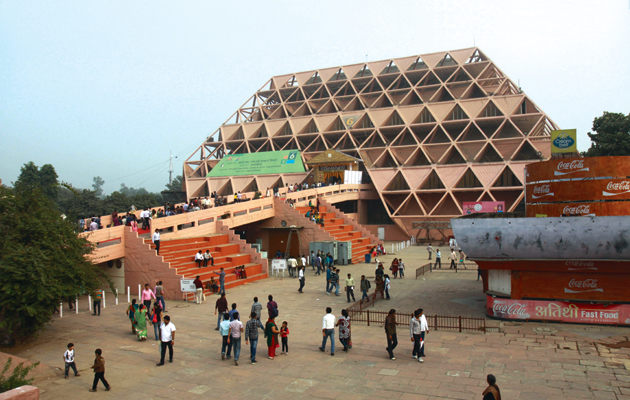|
|
||
|
Indian architect Raj Rewal recently received France’s highest civil honour. But what is arguably his greatest work faces the wrecking ball, writes Debika Ray When India’s first prime minister Jawaharlal Nehru commissioned Le Corbusier to masterplan the city of Chandigarh, he said its design would be ‘unfettered by the traditions of the past, a symbol of the nation’s faith in the future’. Like many postcolonial leaders, he saw modernist architecture as a vehicle for establishing a national identity that rejected the influences of India’s former colonial rulers and announced its arrival on the world stage. An opposing camp saw modernism as yet another imperialistic imposition, calling, instead, for a revival of India’s pre-colonial traditions. Architect Raj Rewal’s buildings at New Delhi’s Pragati Maidan represent something of a resolution between those two impulses. Sitting in a 150-acre complex of leisure and exhibition spaces – built to celebrate 25 years of independence – these six structures demonstrate methodological ingenuity and sensitivity to India’s heritage. Rewal, who also masterplanned the site, began his career at Michel Ecochard’s office in Paris, and was awarded the French Legion of Honour in March. The pièce de résistance is the Hall of Nations. With a 78m-span interior, it is one of the largest concrete space-frame structures in the world – big enough to display books or bulldozers. In the absence of the money, technology or materials to prefabricate components or steel frames, as his western contemporaries would have done, Rewal opted to hand-cast concrete on site, making use of the resource India had in abundance: labour. Far from just some concrete brute, its chamfered corners reference Mughal architecture and its deep, criss-crossed, perforated walls echo the latticed screens that shade the inside of many traditional Indian buildings. The year Pragati [‘Progress’] Maidan was opened by then prime minister Indira Gandhi, it hosted the Asia ’72 trade fair, and it has since hosted myriad events – book fairs, auto expos, annual filings of tax returns and, since 1980, the India International Trade Fair (IITF), attended by over 3 million people in 2006. Last year, the government announced plans to demolish the buildings and replace them with ‘state-of-the-art’ facilities that will allow India to host events like the G20. A campaign to save them has failed, despite backing from the likes of Centre Pompidou and MoMA. Rewal himself has called for them to be renovated, pointing out that they occupy barely two per cent of the park. This month, however, Pragati Maidan is hosting its final edition of the IITF before its closure for redevelopment. This battle is, again, over competing visions of the future. Intended as public spaces for meeting and learning, Pragati Maidan sprung up at a time of faith in a nation’s ability to shape its destiny, albeit one that was soon to be shaken by the state of emergency, which plunged India into existential crisis. Today, 25 years after the reforms that liberalised its economy, India’s urban development is shaped by the demands of global capital. The glass-and-steel structures that will no doubt replace Rewal’s designs will reflect its ambitions to take a seat at the international top table and attract investment. Meanwhile, with few conservation rules and little public conversation about the built environment, the architectural identity of contemporary India remains unresolved. |
Words Debika Ray |
|
|
||



















